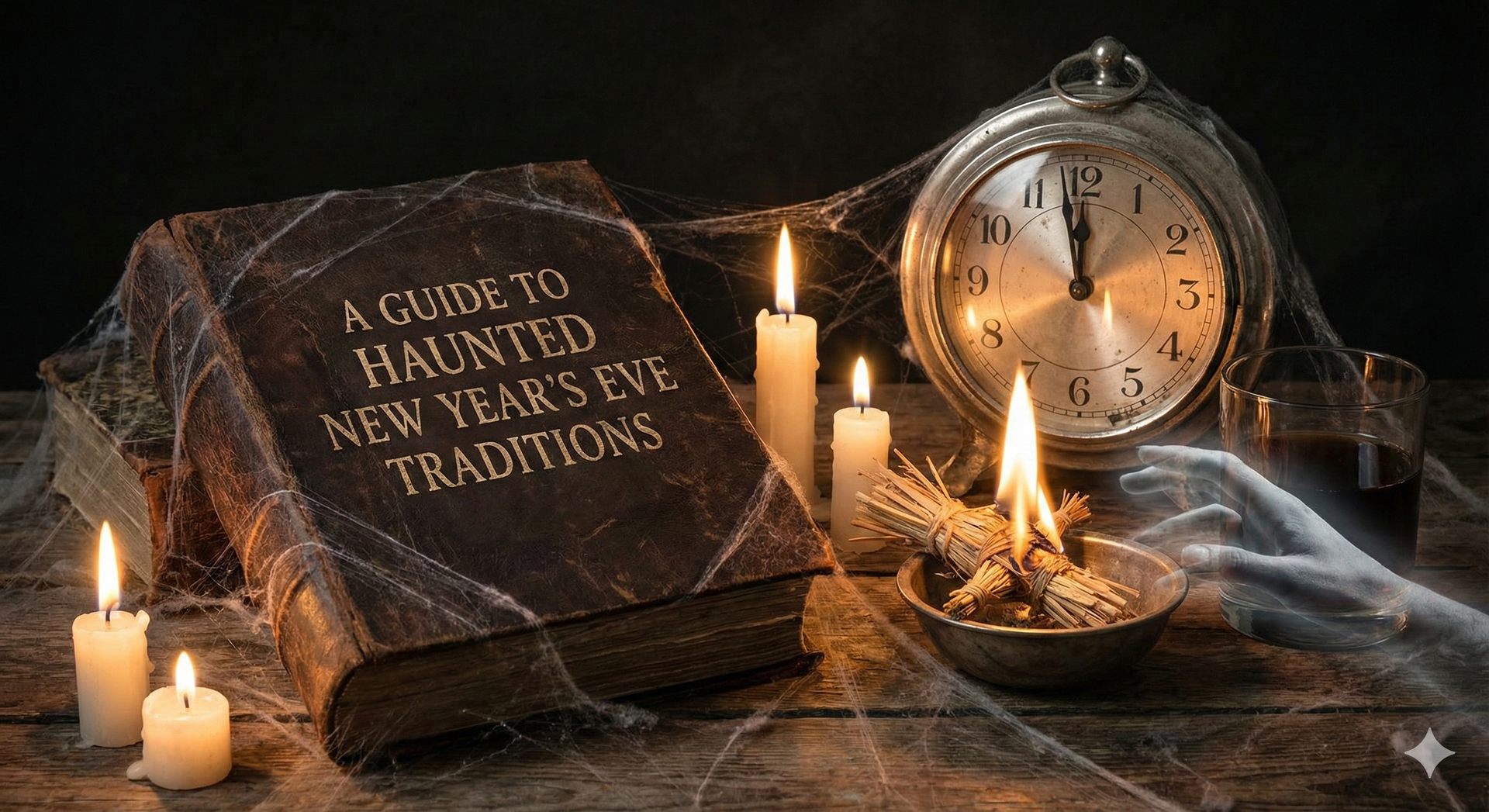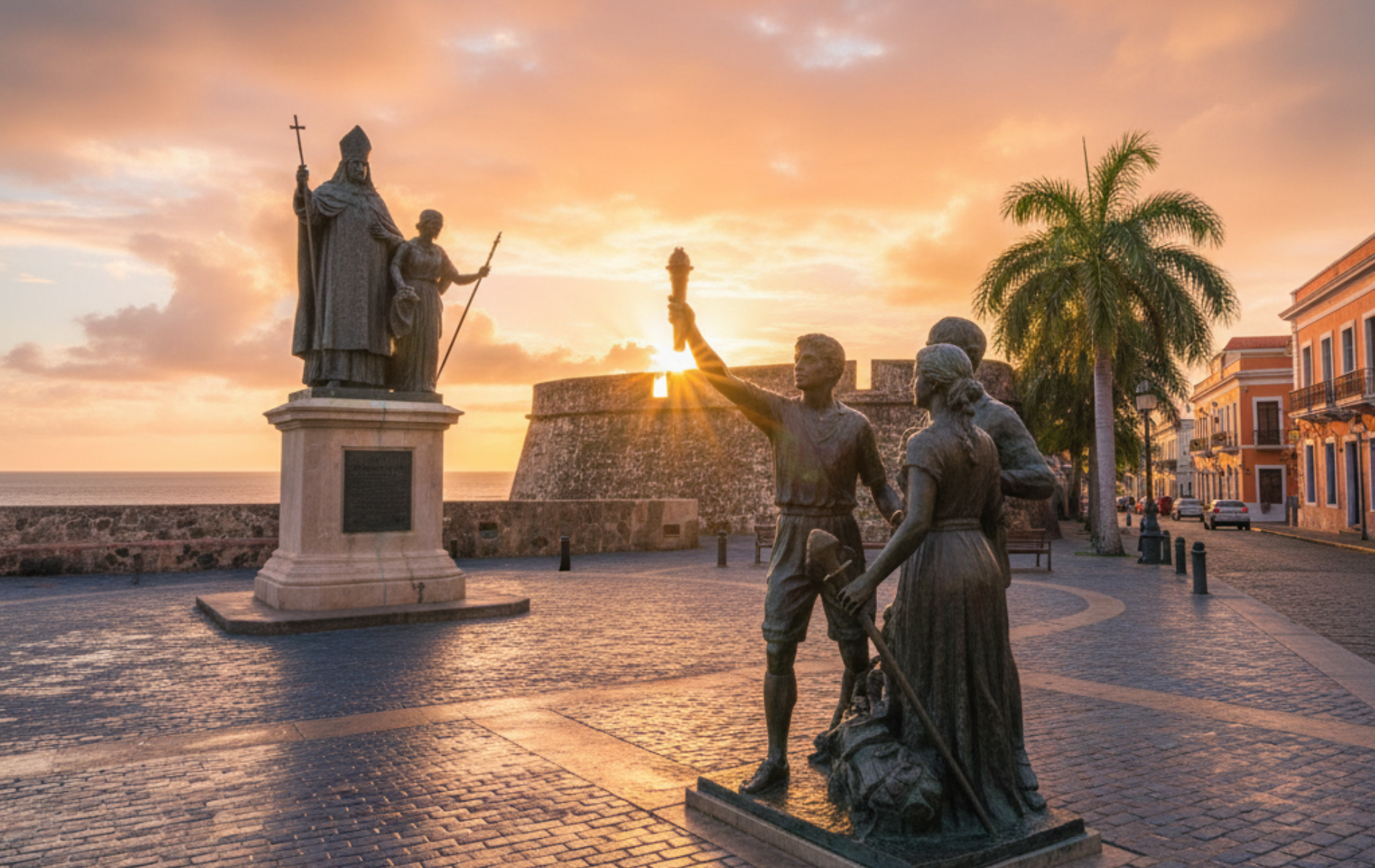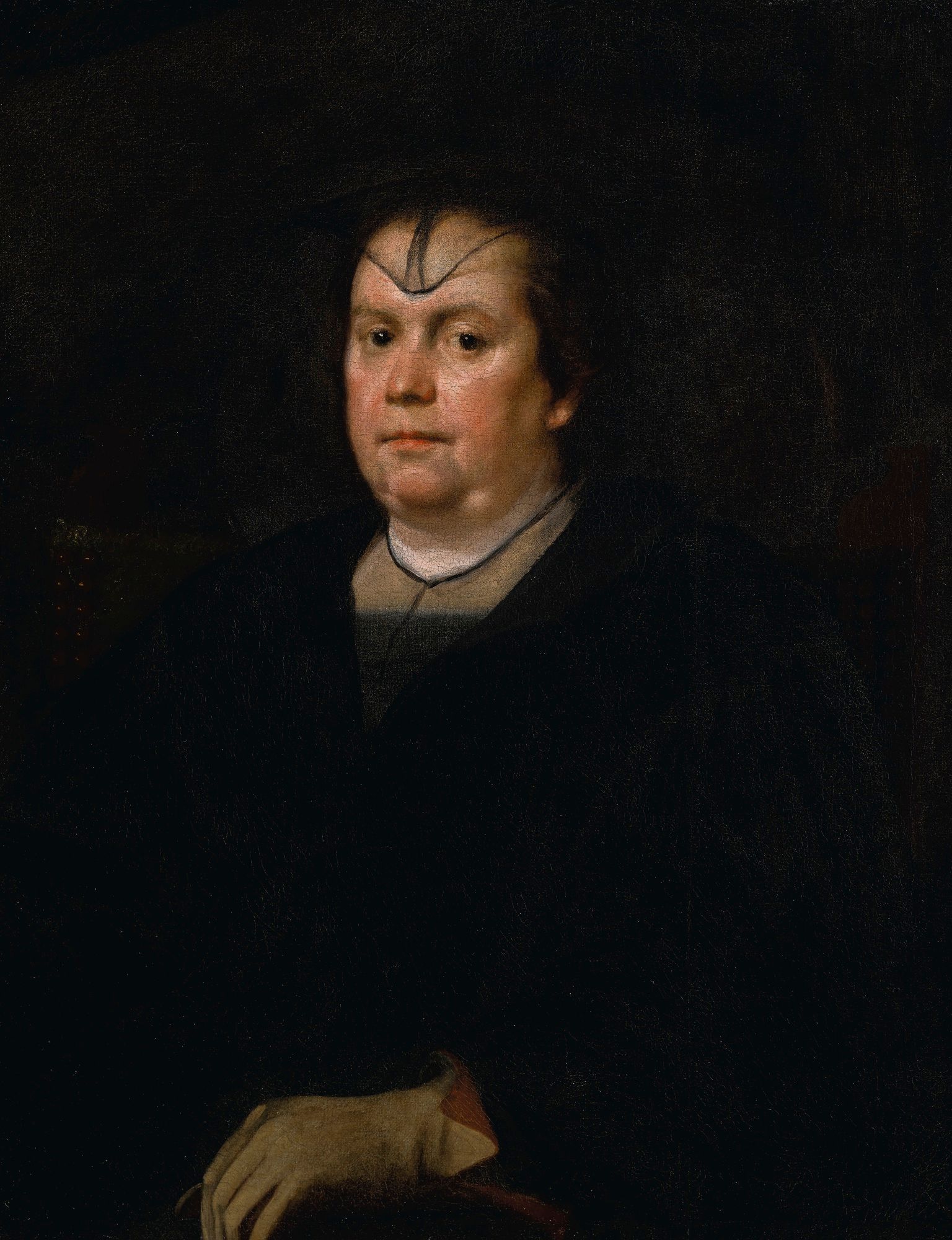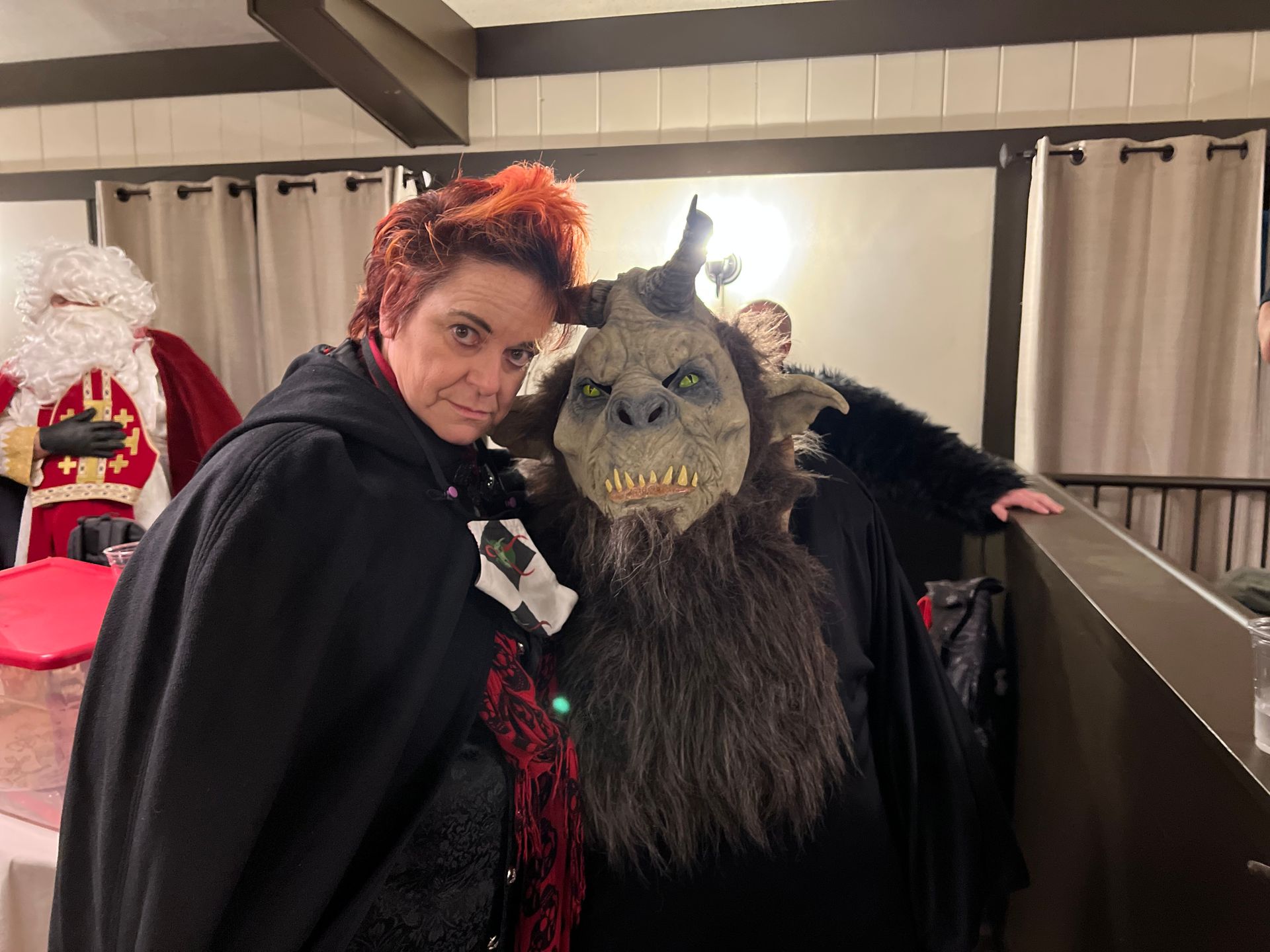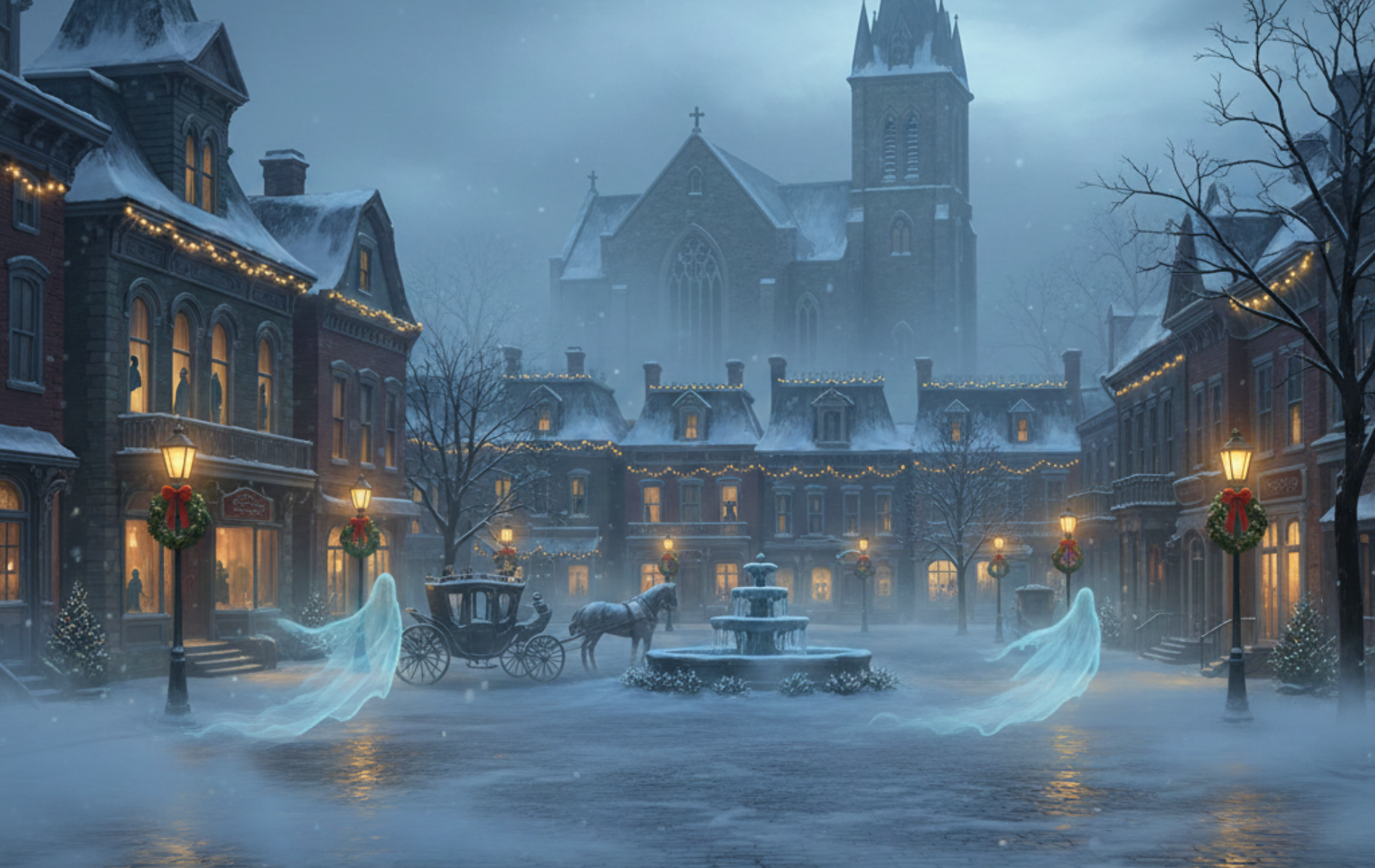Possessed in the Heartland: True Midwest Exorcisms and the Secret School Training Priests to Fight Evil
The Midwest: America's Unexpected Exorcism Epicenter
Exorcism isn't just a relic of medieval superstition or horror films. It's real, it's active, and it's surprisingly rooted in the American Midwest. From terrifying tales of demonic possession in Wisconsin and Indiana to the real-life inspiration for The Exorcist in Missouri, the Heartland holds a haunting history few realize. And at the center of today’s spiritual battle against evil? The Milwaukee-based Pope Leo XIII Institute, training priests to confront the darkness.
Carl Seige: Wisconsin's Forgotten Demonic Case
Long before The Exorcist terrified moviegoers or the Vatican formalized the modern Rite of Exorcism, a chilling case unfolded in the small town of Watertown, Wisconsin. In the mid-1800s, a teenager named Carl Seige, the son of German immigrants, began exhibiting bizarre and frightening symptoms that would become a foundational case in American Catholic exorcism history.
Carl's ordeal began with a seemingly mundane event: his family discovered a duck egg with a mysterious pinhole. Carl's sister believed the egg had been cursed by a local witch. After the family dog consumed the egg and went mad, tragedy followed. Carl's sister died suddenly of unexplained causes, and Carl himself began suffering physical and psychological afflictions, including seizures, paralysis, and deep stupors.
Terrified, the Seige family turned to the Catholic Church, and Bishop John Martin Henni of Milwaukee approved a formal investigation. Father John Gmeiner, a priest with a strong academic and theological background, was assigned to the case. Gmeiner would conduct multiple exorcism rituals on Carl throughout his life and later wrote a detailed account in his 1886 book Spirits of Darkness.
The rituals were lengthy, often lasting for hours, and would leave both Carl and the attending priests physically and spiritually exhausted. Between episodes, Carl would return to a calm demeanor, only to relapse weeks or months later. His condition appeared cyclical and chronic, defying the tidy resolution often seen in films.
The case of Carl Seige is notable not only for its intensity but for its early timing—predating most other documented American exorcisms. It set the precedent for how the American Catholic Church would respond to suspected possessions, combining ritual, counseling, and careful observation. While Carl’s ultimate fate remains somewhat obscure, his story continues to echo through Wisconsin’s haunted history as one of the first exorcisms on American soil recognized by Church authorities.
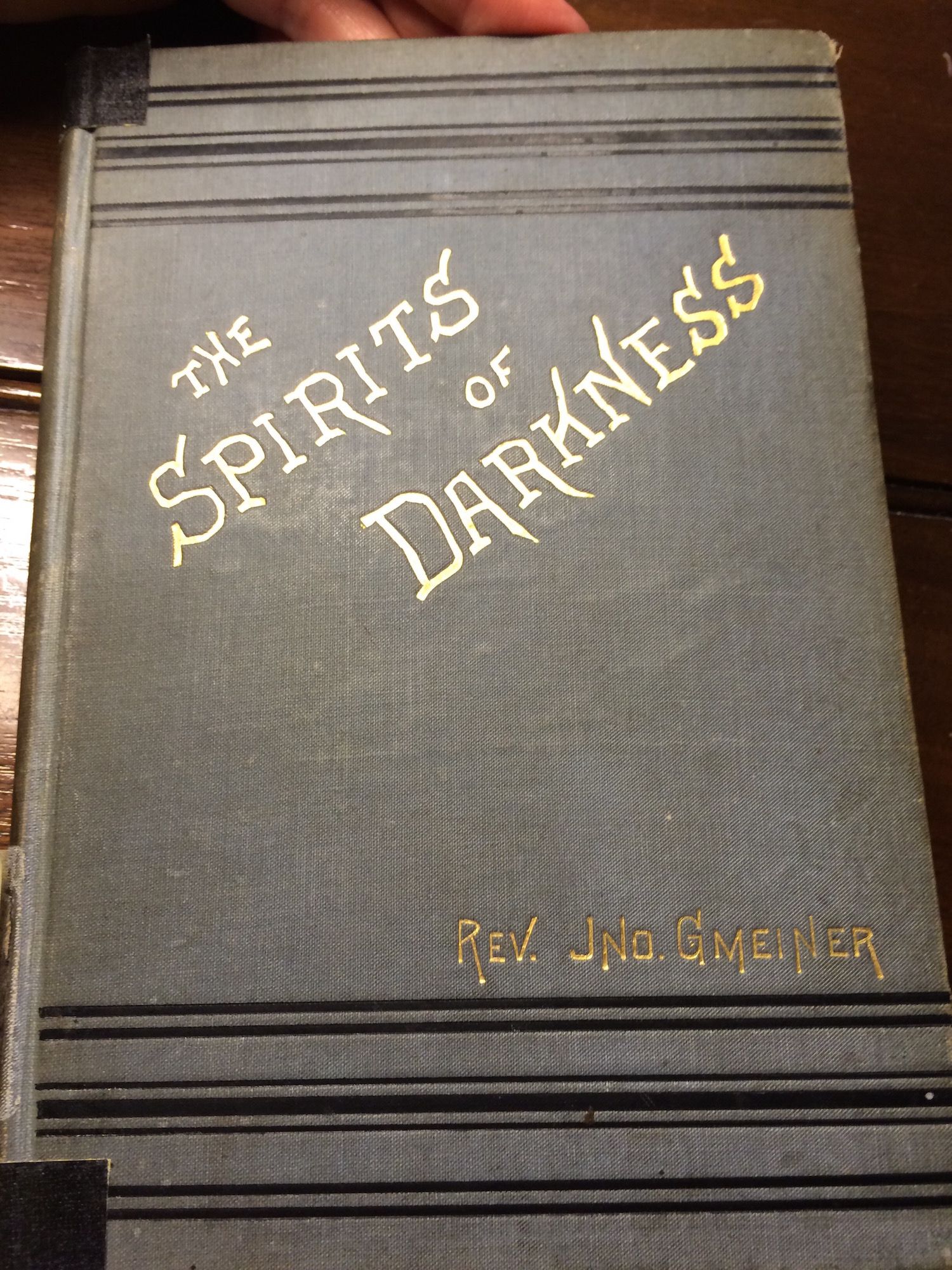
The Convent Hill Demonic Infestation: Milwaukee, 1854
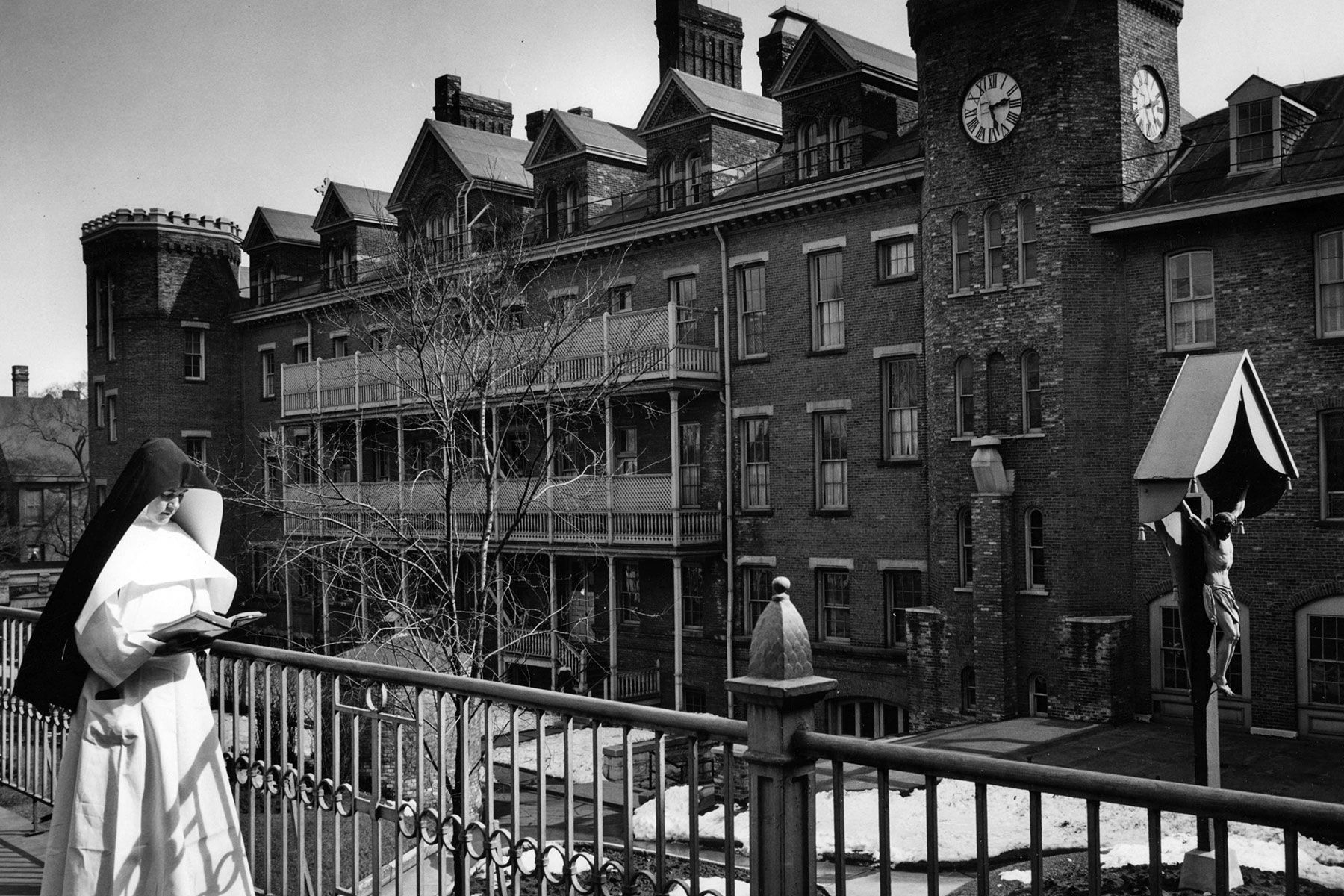
In 1854, eerie events plagued the Motherhouse Convent of the Sisters of Notre Dame in Milwaukee. Located near Knapp and Jefferson streets, this convent became the scene of one of the Midwest's most unsettling hauntings.
On December 8th, Mother Caroline Friess heard clawed feet in the hallway and knocking outside the chapel. The chapel windows rattled, and when she tried to investigate strange activity in the dormitory, candles and oil lamps refused to light — inexplicably extinguishing themselves.
Inside the dormitory, she found no intruder but instead a bizarre, waterless "slush" on pillows and inside nightcaps. One of the caps reportedly began to move on its own. Over the following nights, supernatural disturbances escalated:
- A locked room's call bell rang loudly and was seen flying across the room.
- Loaves of bread vanished and reappeared floating in the cistern.
- Friday fish transformed into meat in the oven.
- Hidden beasts shredded clothing in closets.
- Candles disappeared during mass and reappeared burning in a broom closet.
- Pots and pans clanged and were found red-hot with no one near the kitchen.
Sisters were slapped by invisible hands, bonnets knocked off, and the convent dog vanished after yowling in pain. One candidate experienced uncontrollable laughter upon entering the chapel and was suspected of possession. After she was dismissed from the convent and returned to her suitor, the disturbances ceased.
A year later to the day, the sisters were awoken by celestial singing and light in the chapel. They believed they had witnessed a choir of angels. In response, Mother Caroline established a chapel of perpetual adoration, where nuns prayed around the clock for decades.
Roland Doe and the Real Exorcist Story
The most famous exorcism story ever told has deep Midwestern ties. In 1949, a 14-year-old boy pseudonymously known as Roland Doe was moved from Maryland to St. Louis, Missouri, after his family sought help for what they believed was a demonic possession. There, Jesuit priests performed a series of intense exorcisms at Saint Louis University and Alexian Brothers Hospital.
The inspiration for William Peter Blatty's The Exorcist came from an August 1949 article in The Washington Post titled, "Priest Frees Mt. Rainier Boy Reported Held in Devil’s Grip," about a 14-year-old boy referred to as "Roland Doe" (later revealed to be Ronald Hunkeler). Strange events reportedly began after Roland attempted to contact his deceased Aunt Tillie, herself a spiritualist, via Ouija board. Soon, rapping noises echoed through the walls, objects flew across rooms, and his bed moved by itself: classic poltergeist activity.
Initially, the family sought help from Protestant minister Luther Schulze. When that failed, they turned to the Catholic Church. Jesuit priest Father William Bowdern, along with Father Walter Halloran and Father Raymond Bishop, performed more than twenty exorcisms over two months in both Washington, D.C., and St. Louis, Missouri. Much of what we know comes from Father Bishop’s diary, which William Peter Blatty would later use as the basis for his novel. Ronald was a student at Gonzaga High School and reportedly went on to live a quiet, successful life.
The Gary, Indiana Demon House
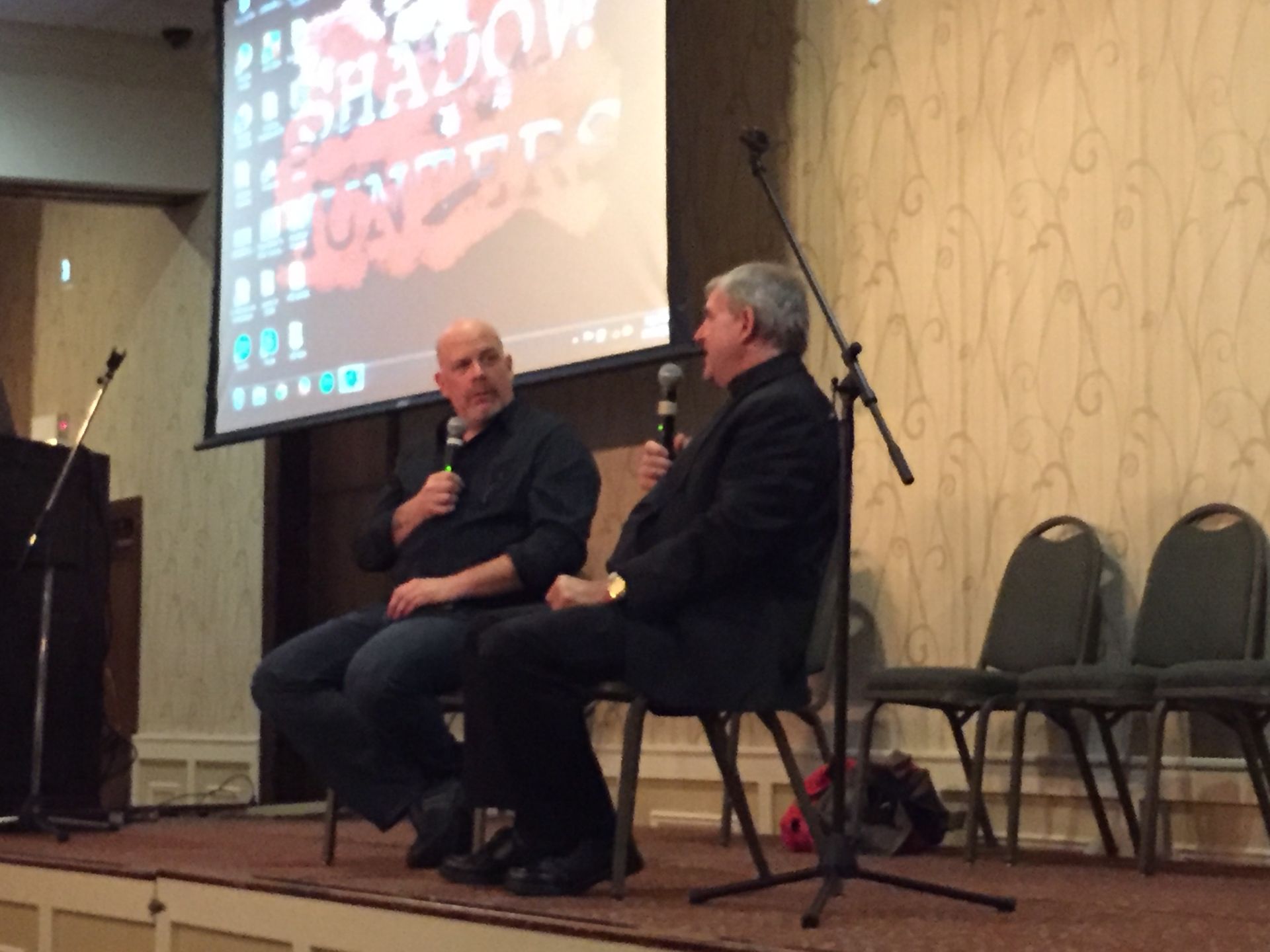
One of the most chilling and widely publicized exorcism cases of the 21st century occurred in Gary, Indiana in 2011–2012, at a modest rental home on Carolina Street. Known today as the “Demon House,” this case involved terrifying claims of supernatural activity affecting an entire family and shocking multiple government officials, medical personnel, and members of the clergy.
Latoya Ammons, her mother Rosa Campbell, and her three children moved into the house in November 2011. Almost immediately, they began experiencing bizarre phenomena: swarms of flies that refused to die, shadowy figures pacing the rooms, and footsteps echoing through empty hallways. Then things escalated, allegedly into full-blown possession.
The children began behaving violently and erratically. One boy growled in a deep voice and spoke in strange tongues. Another child was reported to have levitated. During one hospital visit, a child allegedly walked backward up a wall in front of a nurse and a Department of Child Services caseworker. Both witnesses later gave sworn affidavits verifying what they had seen. Psychological evaluations could not explain the behavior, and the family remained convinced that they were under demonic attack.
The family sought help from local churches, but many refused to get involved. Eventually, Father Michael Maginot, a Catholic priest from the nearby St. Stephen Martyr Parish, agreed to investigate. He performed a blessing on the home and ultimately concluded that an exorcism was necessary. After receiving permission from the Diocese of Gary, Father Maginot conducted three exorcisms on Ammons... two in English and one in Latin.
The story gained national attention, appearing in the Indianapolis Star and attracting media from around the world. The official police report included statements from officers who claimed they witnessed blinds dripping oil with no source, and electronic
equipment malfunctioning in impossible ways. One officer even refused to return to the property.
In 2015, I met Father Magniot at the Chicago Hauntings Ghost Convention after he told a story of looking up a particular demon's name on his computer and it caused the computer to crash and a printer to malfunction when he tried to print up information about it. He refused to speak his name, I asked Dave Schrader from Darkness Radio as well, who conducted the interview if he would tell me the name, and he declined as well.
In 2014, paranormal investigator and filmmaker Zak Bagans purchased the house for $35,000. He spent months documenting his experience inside, reporting extreme psychological and physical effects on himself and his crew. He later demolished the home in 2016, citing its dangerous spiritual energy, and produced the documentary Demon House in 2018 to share his findings.
Signs of Demonic Possession (According to the Church)
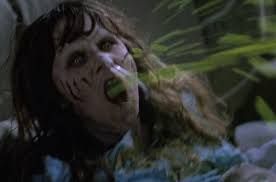
- Knowing unknowable information (e.g., predicting events or secrets)
- Speaking or understanding unknown languages
- Supernatural strength
- Aversion to sacred objects
The Church typically requires at least two signs, along with psychological evaluations, before approving an exorcism.
The Pope Leo XIII Institute: Training America’s Exorcists
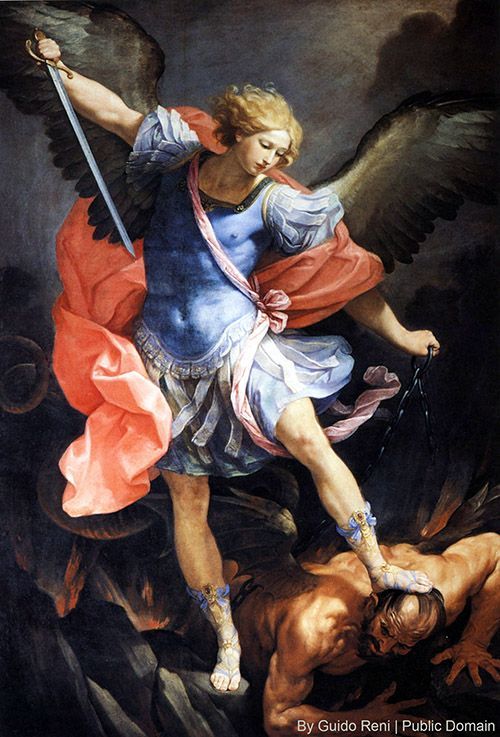
Founded in Milwaukee in 2010, the Pope Leo XIII Institute is a Catholic organization dedicated to training priests in the Rite of Exorcism. Partnering with Mundelein Seminary near Chicago, it offers courses in spiritual warfare, demonology, and pastoral counseling.
The institute exists to ensure every Catholic diocese has a trained exorcist, a response to rising global reports of possession. Priests are trained to distinguish between mental illness and true demonic activity, combining faith with clinical awareness.
Pope Leo XIII, who served as pontiff from 1878 to 1903, is remembered not only for his lengthy and influential papacy but also for his profound spiritual insights, particularly a vision he reportedly had concerning the future of the Church and the world. This vision is often linked to his deep devotion to St. Michael the Archangel. According to accounts, Pope Leo XIII experienced a mystical moment after celebrating Mass, during which he was shown a terrifying glimpse of demonic forces unleashing chaos on humanity and the Church. This intense spiritual experience moved him to compose the famous Prayer to St. Michael, asking for protection against evil and spiritual attacks. His vision underscored his awareness of a spiritual battle underlying worldly events, reinforcing his belief that the Church must remain vigilant and rely on divine protection.
The Heartland's Haunted Legacy

Whether you're a believer or a skeptic, the Midwest holds a uniquely rich and eerie legacy of real-life exorcisms. From historical accounts in Wisconsin to modern horror in Indiana and Missouri, the region is more than just farmland, it's a spiritual battleground. And with the Pope Leo XIII Institute leading the charge, the fight against darkness continues today with an annual conference dedicated to training exorcists.
If you're fascinated by exorcism history, haunted places, or the intersection of faith and fear, the Midwest offers an unforgettable journey into the supernatural.

